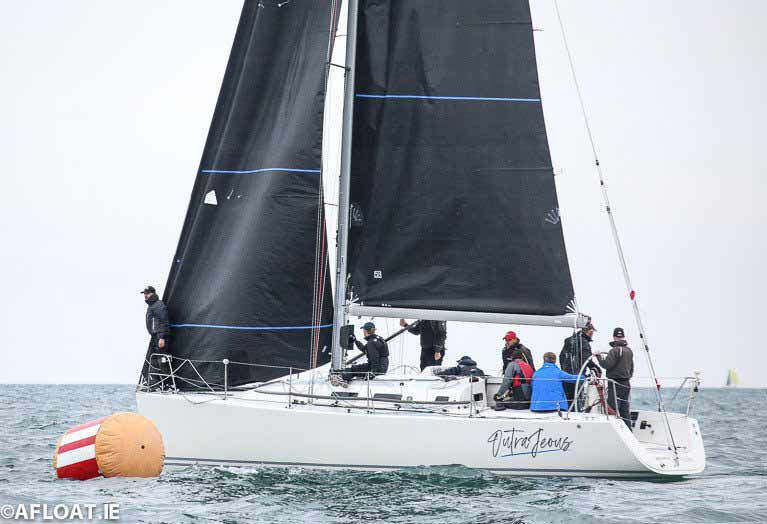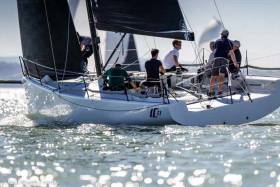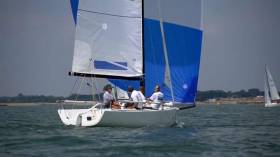Displaying items by tag: RaceGeek
Racegeek D10: Double Irish Interest in Melges IC37
Icy, the Melges IC37 has been in winning form since she launched for Cowes Week this summer. And when you take another look at her, there's more than one Irish connection. In keeping with the keep it simple but do it well ethos of the design, Icy uses a Racegeek D10 for its electronics.
The Irish Marine Tech 'RaceGeek' Instrument was developed in Dublin by Howth sailor Ric Morris.
Morris filled in some of the details onboard Icy."The set-up on Icy couldn't be simpler. A B&G WS310 masthead unit and Airmar DST800 speed and depth transducer wire straight to the d10. Job done. The tactician has control over the d10 from the back of the boat via his phone and uses a tablet for navigation".
Developing True Wind Function
While talking electronics, Morris gave an update on Racegeek in general. "It's been great to have data from boats like Icy and Outrajeous (see bewlo) here in Ireland to help us develop true wind function for the d10. We'll be launching this over the winter.
 A crewman at the mast of the Howth Yacht Club J109 'Outrajeous' prepares to 'ping the line' using a Racegeek D10
A crewman at the mast of the Howth Yacht Club J109 'Outrajeous' prepares to 'ping the line' using a Racegeek D10
This is our third year and one of consolidation. Half the top 15 boats at the recent SB20 Worlds and a quarter of the J/70 fleet at their World used a d10. We worked with teams before both events to look at their data and set them up for the event. We have a partnership with RS Sailboats for the RS21 and equipped all their boats in the US. A number of the Melges 32s in the US have switched over and we're seeing d10 on the privately-owned IC37s. We had our first sale to a quarter tonner and FarrEast 28.
Probably the craziest boat with a d10 is an Xtreem 40 that's now down in Australia and on the multihull front, we're still working with Piers and the Diam 24s in the UK.
While we focused on the small sports boats in the first couple of years it's great to see take-up across the range of boats we designed the d10 for. The d10 is really the perfect instrument for the whole Irish fleet."
Boats equipped with the d10 digital tactical instrument from Irish start-up Racegeek finished first and tenth at the UK J/70 National Championships at the weekend. The winning team fitted the d10 to their new boat the day before the National Championships and went straight out onto the race course to win the title.
Mark Lees, owner and helm of the new national champions, said "It was a really competitive event and we only pulled clear with a good final day. I bought a d10 because it just made sense to have a single unit. It's a nice bit of kit. We took it straight out and got it working no problem. We only put the boat together and decided to do the nationals a couple of days before so we’re looking forward to exploring the more in-depth functionality. There are some cool features we haven’t touched yet."
SB20 Racegeek
Australian SB20 Racegeek team Porco Rosso recently finished 2nd at the Portuguese National Championships and will be attending the Racegeek sponsored SB20 European Championships to be hosted by the Royal Irish Yacht Club at the end of August. The SB20 always serves up close competitive racing and with teams from 10 countries entered and a number of top team joining the fleet it looks to be an event not to miss.






























































